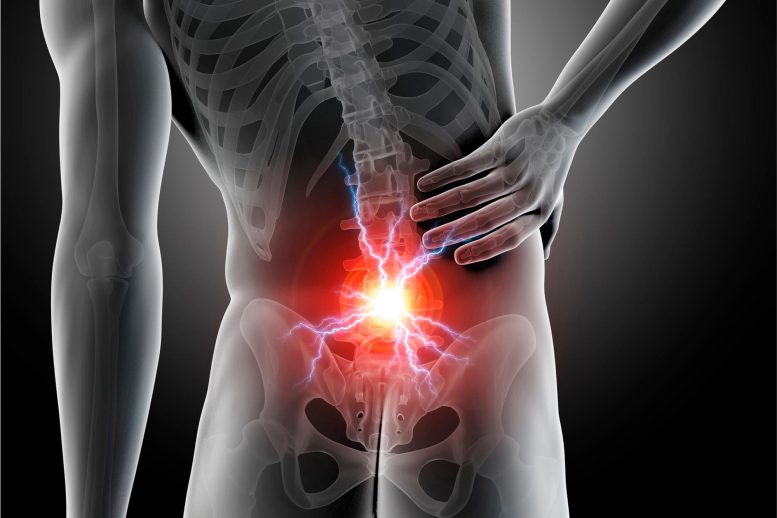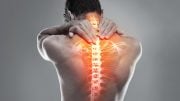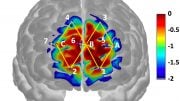
Analysis of global data spanning over 30 years reveals a growing crisis of low back pain, with projections suggesting 843 million people will suffer from the condition by 2050 due to the increasing population and aging demographics.
A review of more than three decades of data reveals an escalating trend in the instances of low back pain, with forecasts indicating that the condition could affect around 843 million individuals by 2050. This rise can be primarily attributed to increasing populations and their progressing age.
The absence of a standardized protocol for managing back pain, combined with inadequate treatment alternatives, is a source of concern for researchers. They fear it could trigger a healthcare catastrophe, given that low back pain stands as the primary global cause of disability.
In Australia, there will be a nearly 50 percent increase in cases by 2050. The landscape of back pain cases is set to shift, with the biggest increases in back pain cases to be in Asia and Africa.
The findings were recently published in The Lancet Rheumatology and the new Global Burden of Disease (GBD) 2021 study.
“Our analysis paints a picture of growing low back pain cases globally, putting enormous pressure on our healthcare system. We need to establish a national, consistent approach to managing low back pain that is informed by research,” says lead author, Professor Manuela Ferreira from Sydney Musculoskeletal Health, an initiative of the University of Sydney, Sydney Local Health District, and Northern Sydney Local Health District.
“Currently, how we have been responding to back pain has been reactive. Australia is a global leader in back pain research; we can be proactive and lead by example on back pain prevention,” said Professor Ferreira who is based at Sydney’s Kolling Institute.
The study reveals several milestones in back pain cases. Since 2017, the number of low back pain cases has ticked over to more than half a billion people.
In 2020, there were approximately 619 million cases of back pain.
At least one-third of the disability burden associated with back pain was attributable to occupational factors, smoking, and being overweight.
A widespread misconception is that low back pain mostly affects adults of working age. But researchers say this study has confirmed that low back pain is more common among older people. Low back pain cases were also higher among females compared to males.
This is the most comprehensive and up-to-date available data that includes for the first time global projections and the contribution of GBD risk factors to low back pain. The work was made possible by the joint efforts of The University of Sydney, the Institute for Health Metrics and Evaluation (IHME) at the University of Washington’s School of Medicine (healthdata.org), IHME’s international collaborators, and the Global Alliance for Musculoskeletal Health (gmusc.com).
“We also know that most available data come from high-income countries, making it sometimes hard to interpret these results for low to mid-income countries. We urgently need more population-based back pain and musculoskeletal data from countries of low to mid-income,” said senior author Professor Lyn March from Sydney Musculoskeletal Health and the Kolling Institute.
The study analyzed GBD data from 1990 to 2020 from over 204 countries and territories to map the landscape of back pain cases over time. The GBD is the most comprehensive picture of mortality and disability across countries, time, age, and
It is also the first study to be used for modeling the future prevalence of back pain cases.
“Health systems need to respond to this enormous and rising burden of low back pain that is affecting people globally. Much more needs to be done to prevent low back pain and ensure timely access to care, as there are effective ways of helping people in pain” said Prof Anthony Woolf, co-chair of the Global Alliance for Musculoskeletal Health which is calling for priority to be given to addressing the growing burden of musculoskeletal conditions.
“Ministries of health cannot continue ignoring the high prevalence of musculoskeletal conditions including low back pain. These conditions have important social and economic consequences, especially considering the cost of care. Now is the time to learn about effective strategies to address the high burden and to act” said Dr Alarcos Cieza, Unit Head, World Health Organization, Headquarters, Geneva.
National guidelines will form the basis of back pain prevention
In 2018, experts (independent of this study) voiced their concerns in The Lancet and gave recommendations, especially regarding exercise and education, about the need for a change in global policy on the best way to prevent and manage low back pain to stop the rise of inappropriate treatments.
However, since then, there has been little change. Common treatments recommended for low back pain have been found to have unknown effectiveness or to be ineffective – this includes some surgeries and opioids.
Professor Ferreira says there is a lack of consistency in how health professionals manage back pain cases and how the healthcare system needs to adapt.
“It may come as a surprise to some that current clinical guidelines for back pain treatment and management do not provide specific recommendations for older people.”
“Older people have more complex medical histories and are more likely to be prescribed strong medication, including opioids for back pain management, compared to younger adults. But this is not ideal and can have a negative impact on their function and quality of life, especially as these analgesics may interfere with their other existing medications. This is just one example of why we need to update clinical guidelines to support our health professionals.”
Co-author Dr. Katie de Luca, from CQUniversity, said if the right action is not taken, low back pain can become a precursor to chronic health conditions such as diabetes, cardiovascular disease and mental health conditions, invasive medical procedures, and significant disability.
“Low back pain continues to be the greatest cause of disability burden worldwide. There are substantial socio-economic consequences of this condition, and the physical and personal impact directly threatens healthy aging.”
Reference: “Global, regional, and national burden of low back pain, 1990–2020, its attributable risk factors, and projections to 2050: a systematic analysis of the Global Burden of Disease Study 2021” by GBD 2021 Low Back Pain Collaborators, June 2023, The Lancet Rheumatology.
DOI: 10.1016/S2665-9913(23)00098-X









Be the first to comment on "New Analysis Dispels Common Back Pain Myth and Reveals a Looming Crisis"